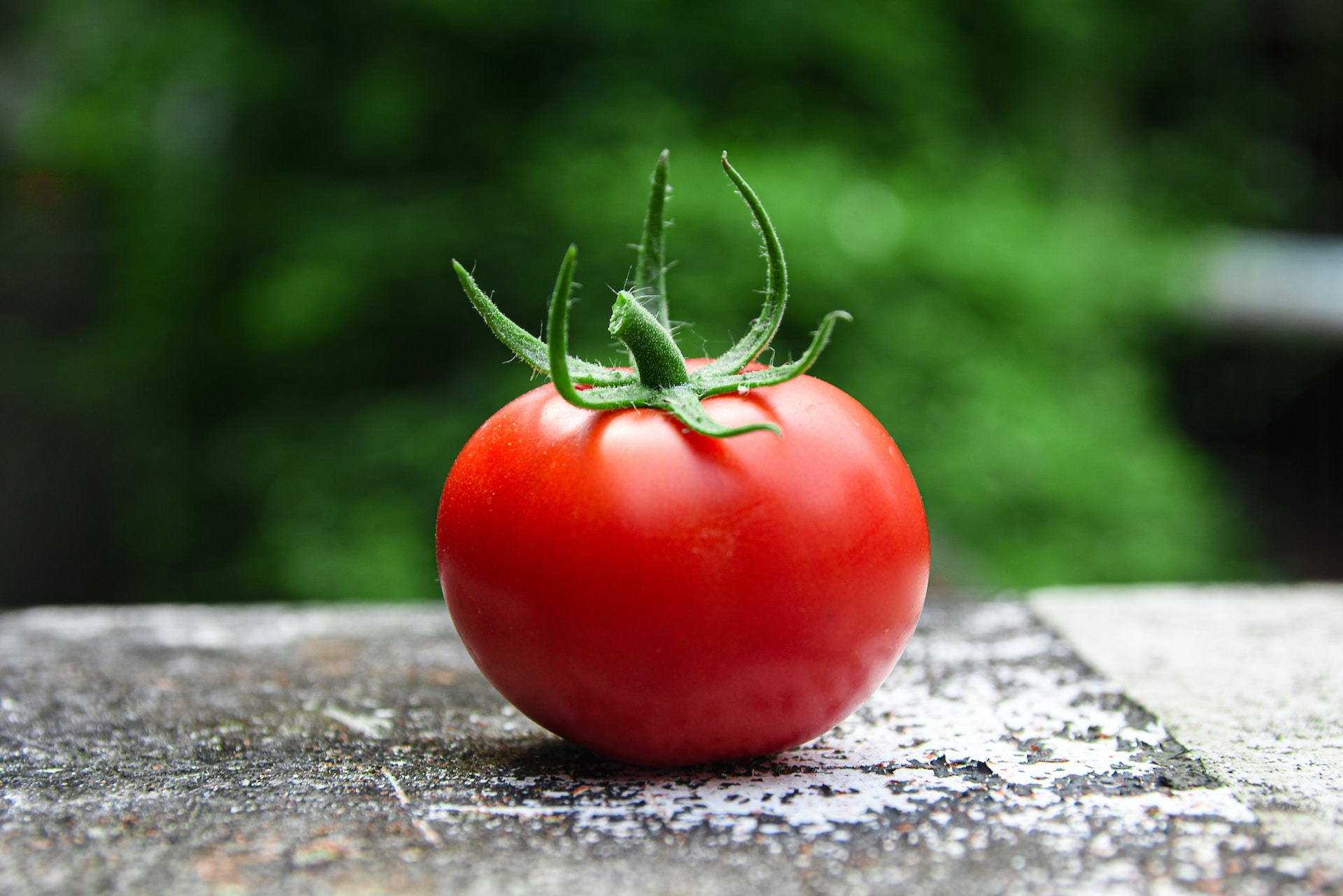
Tomatoes are a widely beloved fruit that is commonly used as a vegetable in various cuisines around the world. Whether it’s enjoyed in a fresh salad, cooked into a rich pasta sauce, or used as a topping on a juicy burger, tomatoes have found their way into the hearts and stomachs of many people.
Aside from their delicious taste, tomatoes also boast an impressive array of health benefits. From being a rich source of vitamins and minerals to potentially reducing the risk of certain diseases, tomatoes have earned their place as a staple ingredient in many households.
In this article, we’ll dive into 17 fascinating facts about tomatoes that will both intrigue and inspire you to incorporate this versatile fruit into your meals more often. So, let’s slice into the world of tomatoes and discover what makes them truly remarkable!
Key Takeaways:
- Tomatoes are actually fruits, not vegetables, and come in a wide range of shapes, sizes, and colors, offering diverse flavors and culinary possibilities.
- Tomatoes are a nutritional powerhouse, rich in vitamins A and C, as well as lycopene, a powerful antioxidant associated with numerous health benefits.
Tomato is actually a fruit, not a vegetable.
Contrary to popular belief, tomatoes are classified as fruits because they develop from the ovary of a flowering plant and contain seeds.
Tomato plants belong to the nightshade family.
Tomato plants are part of the Solanaceae family, which also includes potatoes, peppers, and eggplants.
Tomatoes originated in South America.
The tomato plant is native to western South America and was later introduced to other parts of the world by Spanish explorers.
There are thousands of tomato varieties.
From heirloom to hybrid, cherry to beefsteak, tomatoes come in a wide range of shapes, sizes, and colors, offering diverse flavors and culinary possibilities.
Tomatoes were once considered poisonous.
During the 18th century in Europe, tomatoes were believed to be toxic and were only grown for ornamental purposes. It wasn’t until the 19th century that their edibility was widely accepted.
Tomatoes are a nutritional powerhouse.
Tomatoes are low in calories but rich in vitamins A and C, as well as lycopene, a powerful antioxidant associated with numerous health benefits.
Tomatoes are the most popular garden vegetable in the world.
Whether grown in pots or large-scale farms, tomatoes are beloved by gardeners and farmers around the globe, making them the most widely cultivated vegetable plant.
The largest tomato ever recorded weighed over 7 pounds.
In 1986, a tomato grown in Oklahoma broke the record for the heaviest tomato, weighing a whopping 7 pounds and 12 ounces.
Tomatoes can come in unusual colors.
While we commonly associate tomatoes with red, they can also be yellow, orange, green, purple, and even blackish-brown, adding visual interest to dishes.
Tomatoes are used in various cuisines worldwide.
From Italian pasta sauces to Mexican salsas and Indian curries, tomatoes play a vital role in countless culinary traditions, enhancing the flavors of dishes.
Tomato festivals are held in different countries.
Throughout the world, tomato-themed festivals celebrate this versatile fruit with events like tomato fights, tomato tastings, and even tomato-based art exhibitions.
The world record for eating the most tomatoes in one minute is 10.
In 2010, an American man named Mat “Megatoad” Stonie set the record for devouring the most tomatoes in just 60 seconds.
Tomatoes have a high water content.
With a water content of around 95%, tomatoes contribute to overall hydration and are an excellent choice for staying hydrated during hot summer months.
Green tomatoes can be ripened off the vine.
If you have unripe green tomatoes, you can place them in a paper bag with a ripe banana or apple to speed up the ripening process.
Tomatoes are a versatile ingredient in beauty treatments.
Due to their acidic properties, tomatoes can be used in face masks, exfoliators, and hair treatments to improve skin texture and add shine to dull hair.
California produces the most tomatoes in the United States.
Known for its ideal climate and fertile soil, California leads the nation in tomato production, with over 90% of commercially grown tomatoes coming from the state.
Tomatoes are often considered the “gateway” plant into gardening.
Due to their relatively easy cultivation, many aspiring gardeners start by growing tomatoes, leading to a lifelong love for gardening.
These 17 fascinating facts about tomatoes showcase the incredible diversity, culinary importance, and cultural significance of this beloved fruit. From their historical misconceptions to their nutritional benefits and vibrant colors, tomatoes continue to captivate people around the world. So, next time you enjoy a juicy tomato in your favorite dish, remember these fun facts and appreciate the remarkable journey of this humble fruit.
Conclusion
Tomatoes are a versatile and nutritious fruit that have been enjoyed for centuries. With a rich history and a wide range of varieties, tomatoes have become a staple in many cuisines around the world. From their health benefits to their culinary uses, there are endless reasons to love tomatoes.
Whether you’re adding them to a salad, using them as a base for a pasta sauce, or enjoying them fresh off the vine, tomatoes are sure to satisfy your taste buds. So the next time you bite into a juicy tomato, remember the fascinating facts that make this humble fruit so unique.
FAQs
1. Are tomatoes a fruit or a vegetable?
Technically, tomatoes are classified as a fruit because they develop from the ovary of a flower and contain seeds. However, they are often treated as a vegetable in culinary settings.
2. How do I store tomatoes?
It is best to store tomatoes at room temperature, away from direct sunlight. However, if they are ripe and you’re not planning on using them immediately, you can store them in the refrigerator to prolong their shelf life.
3. Are green tomatoes edible?
Yes, green tomatoes are edible. While they are not as sweet as ripe tomatoes, they can be used in a variety of dishes such as fried green tomatoes or pickled green tomatoes.
4. Are all tomatoes red?
No, tomatoes come in a range of colors including red, yellow, orange, green, and even purple. Each color has its own unique flavor profile, making them a versatile ingredient in the kitchen.
5. Are tomatoes good for my health?
Absolutely! Tomatoes are packed with essential vitamins and minerals, including vitamin C, potassium, and antioxidants. They are also a good source of dietary fiber and have been linked to various health benefits, such as reducing the risk of chronic diseases.
6. Can I eat the seeds of a tomato?
Yes, tomato seeds are safe to eat and can be consumed along with the rest of the fruit. In fact, they are a good source of dietary fiber.
7. How many tomato varieties are there?
There are thousands of tomato varieties around the world, each with its own unique characteristics in terms of size, shape, color, and flavor.
8. Can I grow tomatoes in my garden?
Yes, tomatoes can be grown in home gardens with proper care and attention. They require full sun, well-drained soil, and regular watering.
9. Are heirloom tomatoes better than regular tomatoes?
Heirloom tomatoes are known for their unique flavors and diverse colors. However, both heirloom and regular tomatoes can be delicious, so it ultimately comes down to personal preference.
10. Can I freeze tomatoes?
Yes, tomatoes can be frozen for later use. It is recommended to blanch them first by boiling them briefly, then submerging them in ice water before freezing.
Tomatoes' versatility extends beyond fascinating facts. Nutritious grape tomatoes pack a flavorful punch in salads and snacks. Tomato sauce, a culinary staple, enhances countless dishes with its rich taste and health benefits. Explore more tomato-related topics to expand your knowledge of this beloved fruit.
Was this page helpful?
Our commitment to delivering trustworthy and engaging content is at the heart of what we do. Each fact on our site is contributed by real users like you, bringing a wealth of diverse insights and information. To ensure the highest standards of accuracy and reliability, our dedicated editors meticulously review each submission. This process guarantees that the facts we share are not only fascinating but also credible. Trust in our commitment to quality and authenticity as you explore and learn with us.


